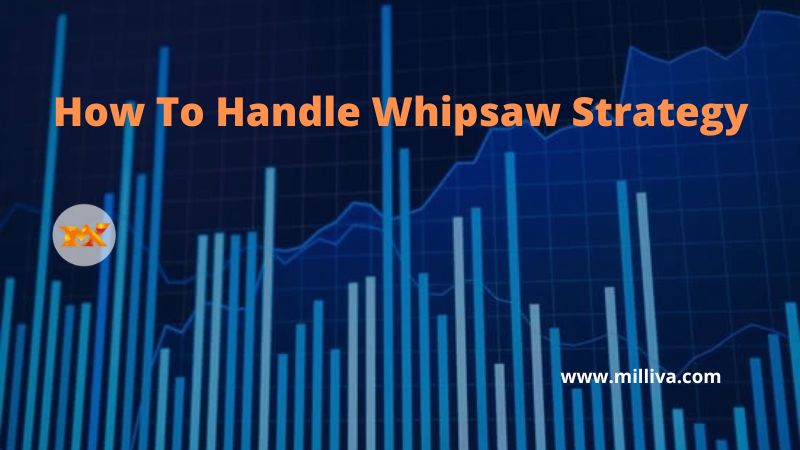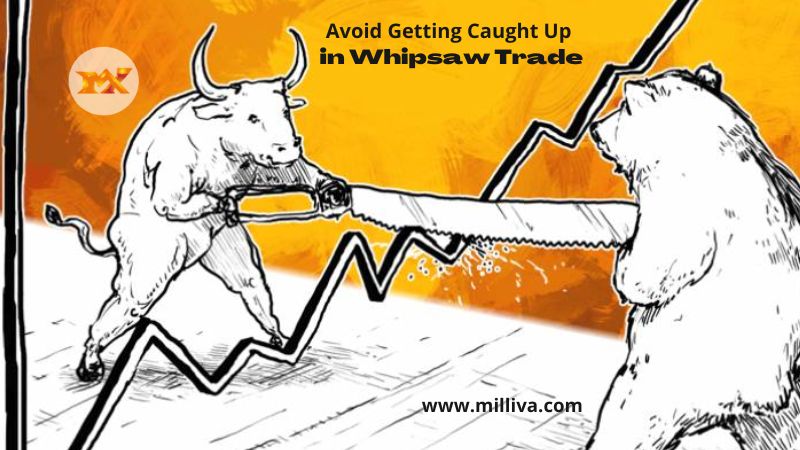What is Whipsaw Trade and How it works

![]()
Market volatility is something that even those with a basic understanding of stock markets are aware of. To deal with the market volatility, analysts and researchers have developed a variety of tools. Utilizing sophisticated analytical and charting techniques does aid in anticipating market action. Markets are too complex for precise predictions, and no instrument is perfect. When you least expect it, share prices can go in the opposite direction. Whipsaws used to describe abrupt changes in the direction of price movement.
What is Whipsaw Trade
When a security’s price is travelling in one direction at one point in time. But then abruptly reverses course to move in the opposite direction, this movement referred to as a whipsaw.
Whipsaw patterns come in two different varieties. The first involves an increase in a share’s price. Which followed by a sharp decline that causes the share’s price to drop in relation to its previous level. The second type is when a share price briefly declines in value. Before abruptly rising to a gain in relation to the stock’s initial position.
Upmarket Whipsaw Trade
Upmarket whipsaws happen when a market or security. Which typically sees an upward rise in pricing, suddenly experiences a downward trend before starting back up again.
Downmarket Whipsaw Trade
A downmarket whipsaw occurs when an asset or indication is falling. But abruptly changes direction to climb briefly before continuing to fall.
How It Works
The push-and-pull motion used by lumberjacks to chop wood with a saw of the same name is where the term “whipsaw” got its name. When the price of a security that a trader just invested in rapidly changes in the opposite and unanticipated direction. It said to have been “whipsawed.”
The markets that experience unanticipated price changes are those where whipsaw patterns are most common. Short-term investors. Such as day traders, used to whipsawing. Those that invest with a long-term, buy-and-hold strategy are frequently able to withstand market volatility and come out on top.
For instance, when an investor buys a stock long, they anticipate that the price will rise over time.
On numerous cases, though, an investor will buy stock in a company at the height of a market upturn. When purchasing a stock, the investor makes the assumption that it will continue to see big gains. The company issues a quarterly report soon after you buy the stock. Which causes investor confidence to shaken and results in a more. Than 10% decrease in stock value that never recovers. The investor basically whipsawed because they are holding the stock at a loss and have no way to sell it.

On the other hand, certain investors, particularly those who short sell, may experience a whipsaw near the market’s bottom. For instance, a trader might buy put options on the S&P 500 in anticipation of an economic downturn.
If the market keeps falling, the investor makes money. But nearly immediately after buying the put options, the market unexpectedly surges, and the investor’s options swiftly lose all of their value and go “out of the money.” In this instance, the whipsaw takes place during a phase of recovery, and the investor loses the money.
What Causes the Whipsaw Trade Effect
Watch out for a quick change in an asset’s price that runs counter to the current trend to spot the whipsaw effect. Although it can be challenging to predict this before it occurs, there are certain things you can do.
Before opening a position, you could, for instance, do technical and fundamental analysis to identify whether an asset currently overbought or oversold. Oversold assets can see a rapid rise in price while overbought assets might see a quick drop in price.
Going long on an asset that has overbought may result in whipsaw trading. You could face whipsaw when going short if it has oversold.
Getting Ready for the Whipsaw Trade and Winning
Trusting your analysis and relying on a multiple timeframe analysis is the most fundamental thing you can do to survive this event and a great many others in tumultuous market conditions.
This implies that your analysis and trading choice regarding the asset’s bias should be based on the convergence of multiple periods depicted in your analysis. You would be given a non-decisive bigger picture if you saw that a short-term analysis calls for long while a long-term analysis calls for short.
For a complete view of the landscape, you must merge all the views you obtain from the various market resolutions. The combination of all the stories will give you the whole picture you need to view and assist you avoid falling for the traps of the whipsaw event if a few timelines coincide around the time you want to act.
Make a Stop Loss Move
If you decide to trade and get caught in the whipsaw pattern, you can shift your stop loss to a safer, more remote location and give yourself a margin for the payment before the market settles on a particular course of action. If your numerous timeframe analysis supports the same conclusion, the likelihood is even higher that you can solve your challenging scenario using the analysis you conducted.
Remain Composed and Assured
Another thing you can do to make it through the whipsaw event safely is to maintain your composure and faith in your multi-timeframe analysis. You just need to maintain your position and avoid being caught with stops that are too close to the event.
Allow for swings, but keep in mind that it’s a risky event, therefore we don’t really advise moving your stop loss to a very remote location. But given the characteristics of a whipsaw pattern, we are aware that these occurrences frequently broaden both their lower and upper ranges. Although it’s difficult to recognize, this market reality will definitely require you to increase the level of risk you’re already willing to take.
Be Observant and Careful
A third strategy for surviving the incident is one you should truly practise constantly: being watchful and alert. Setting and forgetting strategies are not appropriate at this time.
Just Leave the Action
And last, when you understand you’re in a whipsaw event, quitting at break-even is a perfectly rational course of action. If you don’t want to get bored and worn out from watching and managing your trades, you can set your stop loss to a break-even position and try to exit as soon as you can because you know it will take some time to resolve.
You would be better off bailing and waiting for a different opportunity if you are not mentally equipped to wait and manage this crazy occasion.
The moral of the story is that if you can’t hang on and weather the storm, don’t be caught in a whipsaw situation. It’s a difficult one, but if you can look past the storm’s eye, there isn’t much you can’t overcome.
Conclusion
Both traders and non-traders are aware of how challenging the market can be. It’s a challenging puzzle because it never follows a straightforward up-and-down pattern. However, if you take a step back and look at the broader picture, you will notice that prices are fluctuating. From a distance, it appears to be flat and like you are simply betting on whether it will move up or down. The market, in actuality, is multifaceted and there is much more going on than just an up or down seesaw.

Visit us on: www.milliva.com





